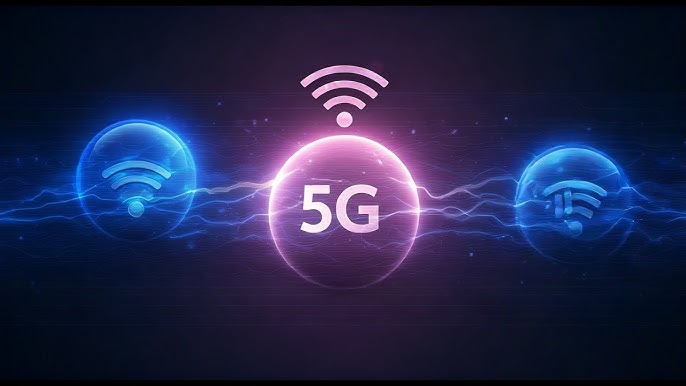The battle for wireless supremacy is heating up as 5G and Wi-Fi 6 continue to evolve, each promising faster speeds, lower latency, and improved connectivity. But which one will ultimately shape the future of connectivity? At TemetaTech, we analyze the strengths, applications, and potential dominance of these technologies in the coming years.
The Power of 5G: Revolutionizing Mobile Connectivity
5G is the latest generation of cellular technology, designed to deliver ultra-fast speeds (up to 10 Gbps), ultra-low latency (as low as 1ms), and massive device connectivity. Unlike its predecessors, 5G operates on multiple frequency bands, including millimeter waves, which provide higher data rates but require more infrastructure.
Key Advantages of 5G:
- Global Mobility: 5G enables seamless connectivity across cities, countries, and continents, making it ideal for mobile applications.
- IoT and Smart Cities: With its ability to support millions of devices per square kilometer, 5G is a game-changer for smart city infrastructure, autonomous vehicles, and industrial automation.
- Ultra-Reliable Low Latency Communication (URLLC): Applications like remote surgery, autonomous driving, and real-time cloud gaming benefit from 5G’s near-instant response times.
Wi-Fi 6: The Evolution of Localized Connectivity
Wi-Fi 6, the latest iteration of wireless networking, enhances traditional Wi-Fi with higher efficiency, increased capacity, and better security. With speeds reaching up to 9.6 Gbps and reduced latency, Wi-Fi 6 is designed for dense environments like office spaces, stadiums, and homes.
Key Advantages of Wi-Fi 6:
- Cost-Effective Implementation: Unlike 5G, Wi-Fi 6 does not require costly spectrum licensing, making it a more affordable option for localized high-speed connectivity.
- Optimized for Indoor Usage: Wi-Fi 6 excels in providing high-speed connectivity in buildings, reducing congestion in high-density areas.
- Better Battery Life for Devices: Features like Target Wake Time (TWT) help conserve power in IoT devices, making it an efficient choice for smart homes and enterprises.
The Future: Coexistence or Competition?
While both technologies offer significant advancements, they cater to different use cases. 5G is better suited for outdoor mobility, large-scale IoT deployments, and mission-critical applications, whereas Wi-Fi 6 thrives in controlled environments, offering high-speed, low-cost connectivity for businesses and homes.
Key Market Trends:
- Enterprise Adoption: Businesses will likely deploy a mix of 5G and Wi-Fi 6, with Wi-Fi 6 handling indoor networks and 5G providing broader coverage.
- 5G in Consumer Devices: Smartphones, tablets, and laptops are increasingly adopting 5G, pushing mobile network operators to expand infrastructure.
- Wi-Fi 6 in Smart Homes: The integration of Wi-Fi 6 in routers, smart appliances, and AR/VR applications will make home connectivity more seamless and efficient.
The Verdict: Complementary Technologies for a Hyper-Connected Future
Rather than a direct competition, 5G and Wi-Fi 6 are more likely to complement each other, creating a robust and seamless connectivity ecosystem. 5G will dominate mobile and outdoor networks, while Wi-Fi 6 remains the preferred choice for indoor and enterprise solutions.
At TemetaTech, we see a future where hybrid networks leverage both technologies to optimize performance, efficiency, and cost. As the world moves toward an era of ubiquitous connectivity, businesses and consumers alike must prepare for a landscape where 5G and Wi-Fi 6 work hand in hand to power the digital age.

